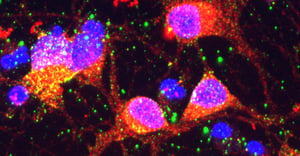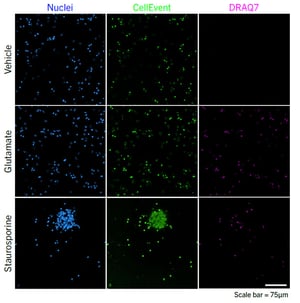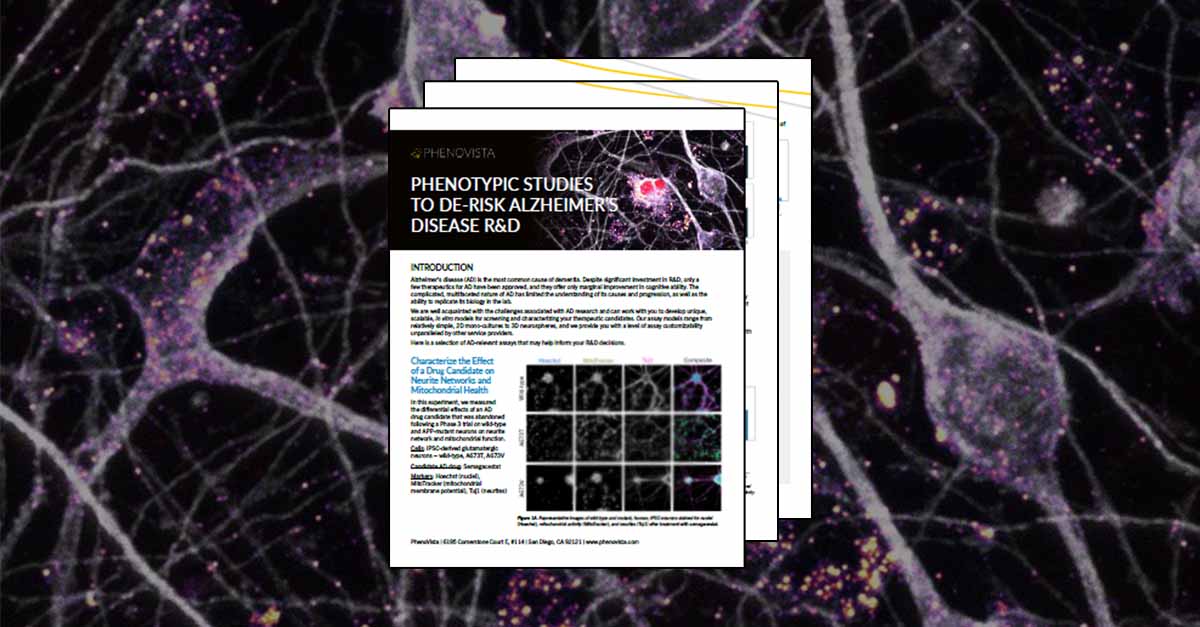

APPLICATION NOTE
Phenotypic Studies to De-risk Parkinson's Disease R&D
OVERVIEW
While incidence of Parkinson’s disease (PD) is rising, the availability of effective and novel treatments is not. Dopamine-replacement therapy has been the standard treatment for PD motor symptoms since the 1960s, even though there have been significant R&D efforts put towards gaining better understanding of PD etiology and pathology.
To aid in our clients’ R&D programs, we specialize in developing in vitro, phenotypic screening assays that range from simple, monocultures to complex, multi-cell type models. We collaborate with our clients to design custom assays that will answer their most pressing questions.
HIGHLIGHTS
We outline a few PD-relevant assays that can help your go/no-go, R&D decisions, including studies that
- Characterize the neurotoxicity of a drug candidate
- Characterize the effect of a drug candidate on mitochondrial stress and dopamine production
- Characterize the effect of a drug candidate on lysosome function
REPRESENTATIVE IMAGES
Representative images of neurons treated with vehicle, glutamate, or staurosporine and stained with nuclei (Hoechst), apoptosis (CellEvent), or death (DRAQ7).

DOWNLOAD THE COMPLETE APP NOTE
- Explore three example studies characterizing the effect of drug candidates on neurotoxicity, mitochondrial stress and dopamine production, and lysosome function
- Browse representative images and data

RELATED RESOURCES
CONTACT US
Let's discuss how we can help with your next study.
Phenotypic Studies to De-risk Parkinson's Disease R&D
Overview
Learn more about Parkinson's disease (PD) and review examples of phenotypic studies designed to measure diverse aspects of PD-relevant biology.
Highlights
- Three example studies characterizing the effect of drug candidates on neurotoxicity, mitochondrial stress and dopamine production, and lysosome function
- Representative images and data







